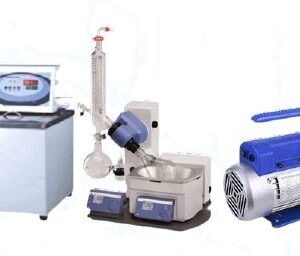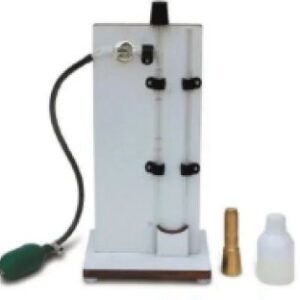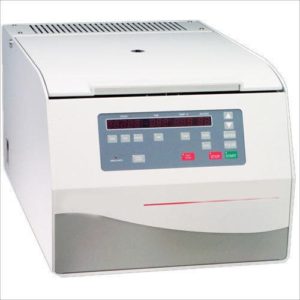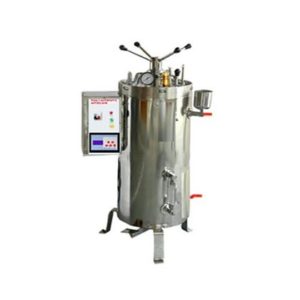GEL DOCUMENTATION SYSTEM
MAKE DINESH SCIENTIFIC
DESCRIPTION
A specialized lab tool called a Gel Documentation System is used to see and record protein and nucleic acid samples that have been separated using gel electrophoresis. Labs that study biochemistry and molecular biology frequently use this approach. A high-resolution camera, image software, and a UV or white light transilluminator are usually the main parts of a gel documentation system.
TRANSILLUMINATOR:
- To illuminate the gels, the system is fitted with a transilluminator that emits either white light or ultraviolet (UV) radiation. White light works well for protein gels, however UV light is typically utilized for DNA and RNA gels.
CAMERA:
- To take crisp, in-depth pictures of the segregated biomolecules inside the gel, a high-resolution camera is built into the device. The particular wavelengths that fluorescent dyes, which are frequently employed to stain DNA, RNA, or proteins, emit are detectable by the camera.
FILTERS:
- Gel Documentation Systems frequently come with replaceable filters that can be used to catch particular light wavelengths, making it possible to see various fluorophores.
IMAGE SOFTWARE:
- Specialist imaging software is used to process and analyze the acquired images. With the aid of this software, researchers may measure and record outcomes, such as the length and width of protein lanes or DNA bands on the gel.
DOCUMENTATION:
- Film-based photography and other conventional techniques are no longer necessary thanks to Gel Documentation Systems, which make it easier to digitally record gel electrophoresis data. Gel pictures can be electronically saved, arranged, and shared by researchers.
VERSATILITY:
- Certain Gel Documentation Systems are made flexible enough to meet varied experimental needs by accommodating a range of gel types and sizes.
HIGH-SPECTRUM CAMERA:
- Clear and detailed photos of the separated biomolecules in the gel are captured using an integrated high-resolution camera.
SOURCES OF EXCITATION AND FILTERS:
- Different fluorescent dyes used to stain DNA, RNA, and proteins can be accommodated by interchangeable filters and numerous excitation sources. Because of this adaptability, researchers can see different kinds of samples.
TECHNICAL DETAILS:
| MODEL | DS-GDS-938 |
| Software for imaging | System for documenting gels using the newest software for imaging protein, DNA, and RNA gels as well as colony counts and other white light images. |
| USB Connectivity | USB for easy and fast transfer/storage of images to PC. |
| Built-in Touch Screen | 6”-12” touch screen for stand-alone operational system. |
| Image Capturing Modes | Automatic and Manual modes. |
| Compatibility | Compatible with new generation computers. |
| COMPUTER SYSTEM | |
| Provided with Gel Doc System | Compatible new generation computer with Intel Core i5, 8/16 GB RAM, 512 GB SSD, 17” display unit, keyboard, mouse. |
| IMAGE CAPTURE SYSTEM | |
| Camera | Scientific grade, zero defect camera with a native image resolution of 5 megapixels. |
| UV Safety | UV safety shutoff for protection against accidental UV exposure. |
| Pixel Density | 12/16-bit – 65536 grey scales. |
| Zoom Lens | Motorized zoom lens with auto focus, auto lighting, and auto exposure features. |
| Illumination | EPI white LED light, Transillumination, UV to Visible light conversion screen. |
| Transilluminator | High-quality slide-out transilluminator on a pull-out rail for publication-quality gel images. |
| Field of View | Transilluminator field of view: 20×20 cm or more. |
| Optional | Equipped with the proper emission filter for trans-blue excitable safe dyes, such as SYBR Green, SYBR Safe, SYBR Gold, SYPRO, SYPRO Ruby, Gel Red, Gel Green, and Lumitein, this motorized filter/conversion screen |
| UPS SYSTEM | |
| UPS | 1 KVA Online UPS with 30 min. backup. |
| SOFTWARE | |
| Software
|
· The newest straightforward program for auto-configuration that is application driven.
· Software Apps Studio, a reproducible gel imaging protocol library. · Multi-user licensed analytical software is included with the system. · Software for picture enhancement and analysis, such as distance measurement, band quantification, molecular weight computation, and colony counting. · Band matching, dendrogram, and cluster analysis software features |















Reviews
There are no reviews yet.